Foreigner sites
The research starts from foreign sites. It means there are some sites that don’t belong to the park or have less related to agriculture. Such as factories, football fields, parking and so on. They can have many effects on agriculture. They can bring pollution and noise, but also visitors, transport, and activities.

sites
And the proposal of the project is to complete the foreigner site. Programing the landscapes and structures that adapt to separate and blend agriculture space and activity space. Protect fields from pollution, combine them with farmers and visitors.
The twelve foreign sites
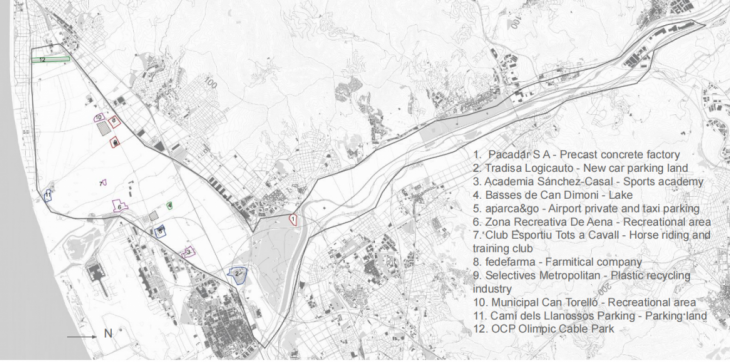
foreign sites list
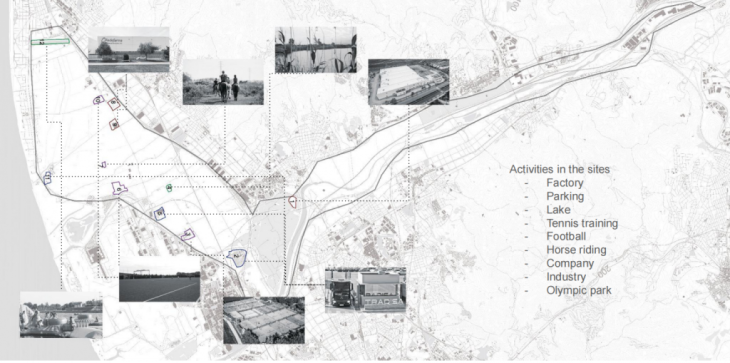
Activities list
Site analysis
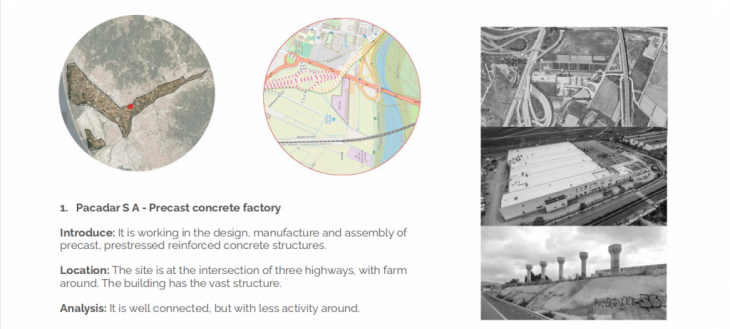
site1
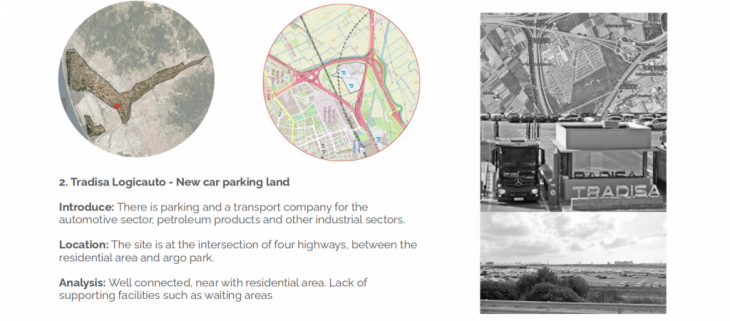
site2
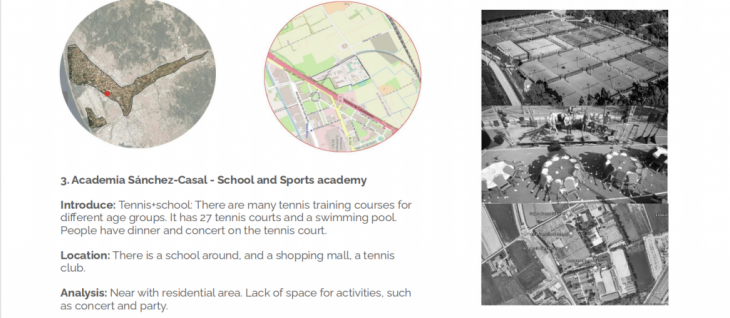
site3
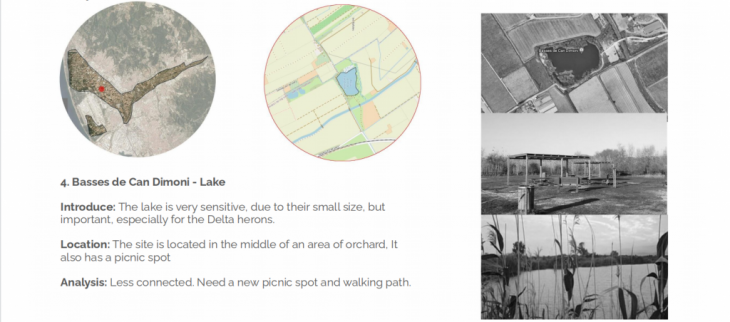
site4

site5
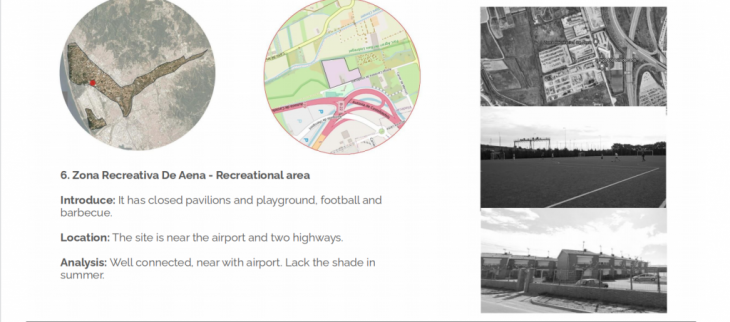
site6
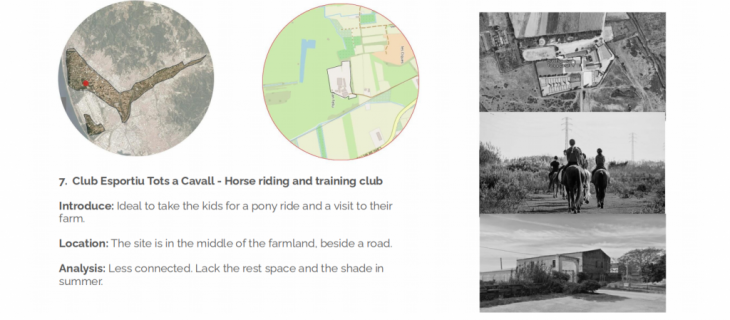
site7
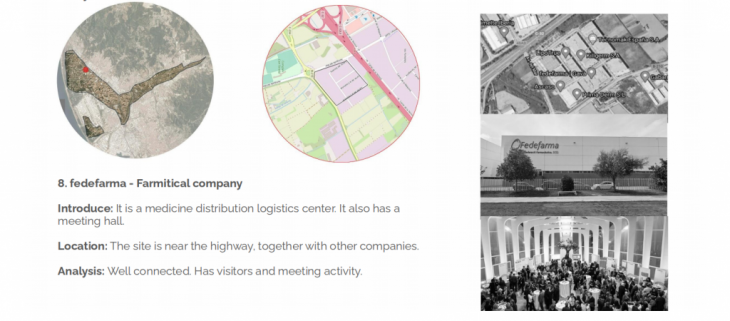
site8
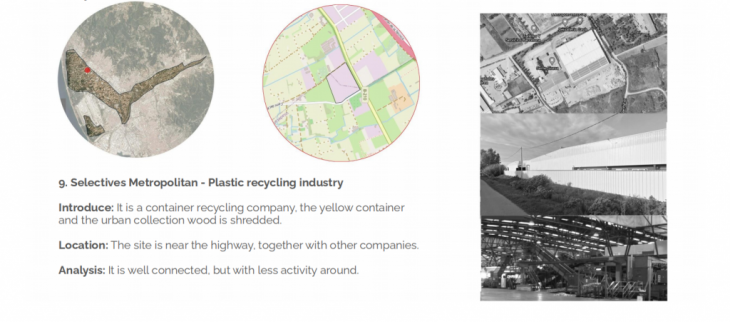
site9
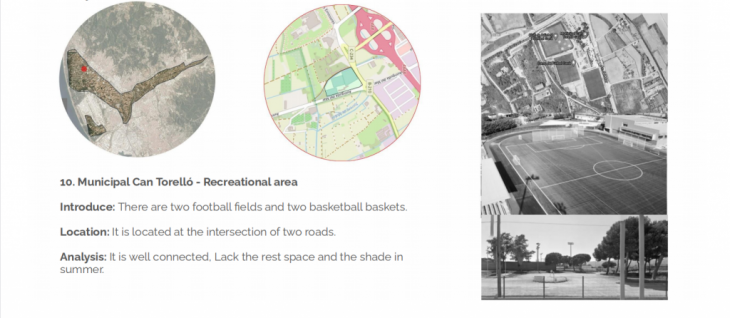
site10

site11

site12
Site types
The twelve foreign sites have been divided into four types. And each type has been connected, base on the exiting road.
- Industries+agriculture
- Parking+agriculture
- Water feature+agriculture
- Sport+agriculture
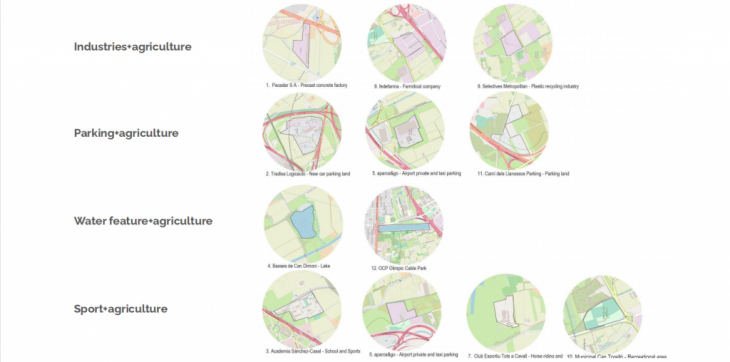
four types of foreign sites
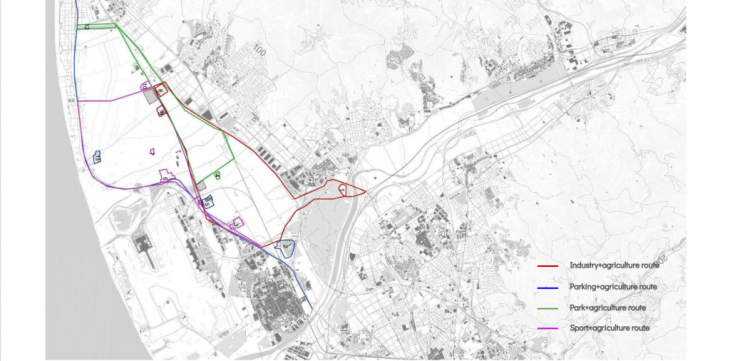
the master plan of connecting sites
20 years plan
With the master plan of connecting sites, we can have a plan of 20 years.
- 5 years: complete sites with landscapes and structures.
- 10 years: add the landscapes and structures along the road.
- 20 years: extend the sites and blend.
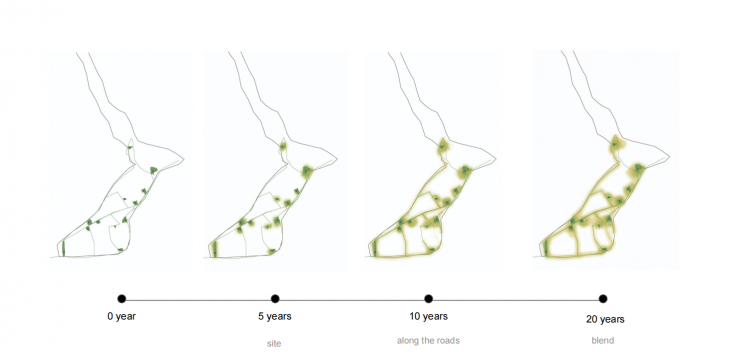
20 years plan
Separate and blend
We have two main methods for each site: separate or blend.
To separate, we can add structures and landscapes around the site. So there will be more activity space near the site, and fewer people will go out to the field. The landscapes between structures and fields can protect the field from pollution and noise. This method works better in factories and parking lots.
To blend, we can add the landscapes between structures and the site. People can go through the landscapes and structures. It will also attract people to the field.
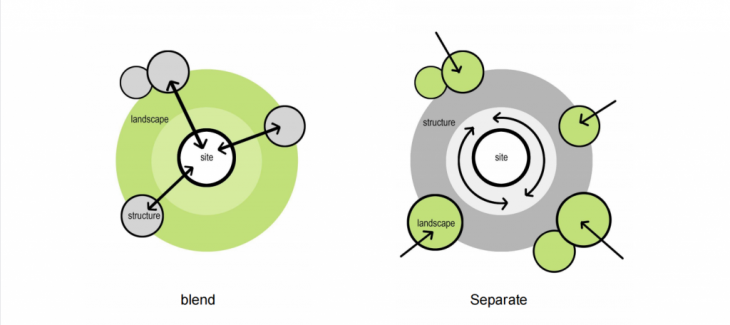
separate and blend
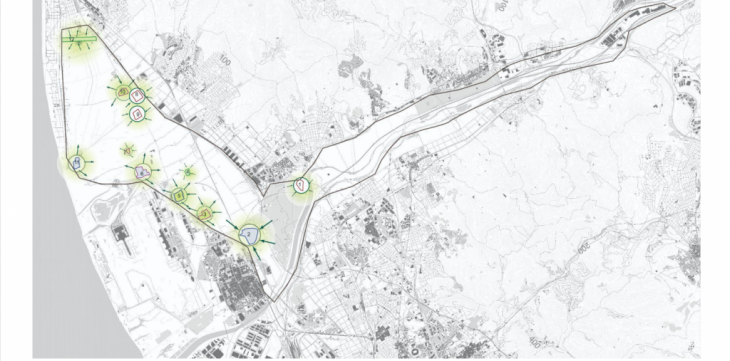
Structures
According to the proposal, I designed several structures and add them to the different types.
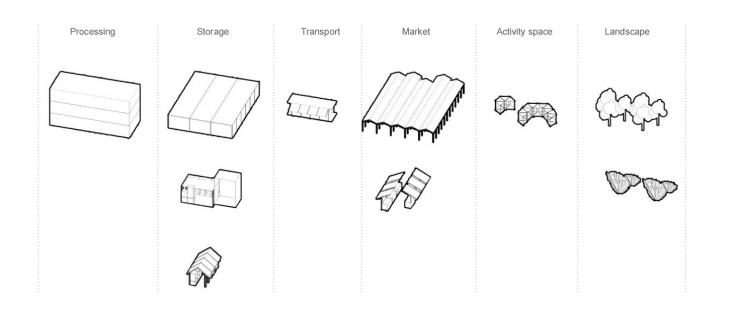
structures
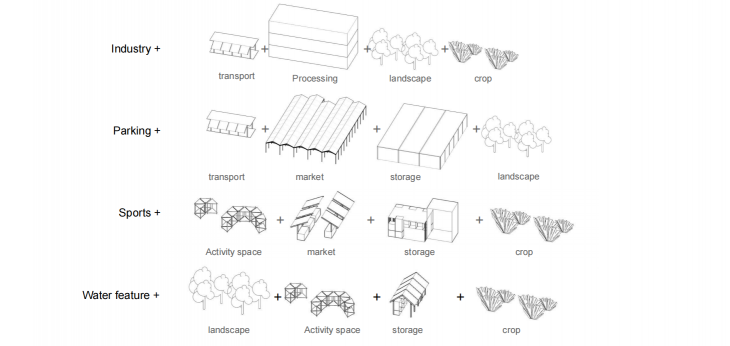
for sites
Workshop 1
In this workshop, we made a circle diagram to show the various aspects of agriculture and design robots for it. I worked on the pruning.
Pruning: Pruning is when you selectively remove branches from a tree. The goal is to remove unwanted branches, improve the tree’s structure, and direct new, healthy growth. It is an accepted theory that the best time to prune is during the dormant period, between late fall and early spring. However, on flowering shrubs, pruning immediately after blooming is the best way to encourage full and abundant flowering growth the following spring.
Using the data from the digital model, farmers can choose when and which branches should be cut. First, the dead and dying branches will be cut and go to recycle or compost. Then, farmers can remove the branches raised from the base of the trunk, vertical branches, branches that grow towards the center. And give the haircut to the lanky and leggy branches.
Grafting: These cutting branches can be grafted. Make a sloping cut in branches and rootstocks, and join these, bind to ensuring maximum contact.
Layering: Farms can also use layering to get new trees. Bend the branch and bury it in the soil. Separate it when it grows roots. The trees obtained by these two methods can be planted again.
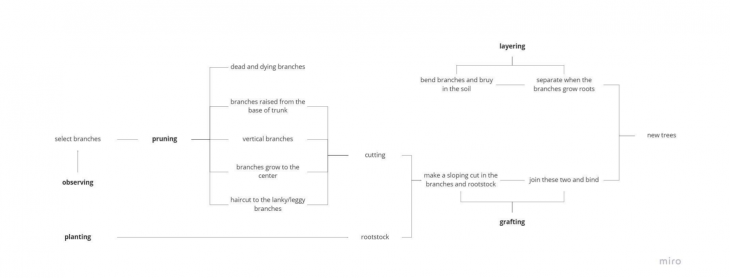
pruning

robot
Workshop 2
Through Grasshopper, we can set limit lines, the size of the grid, and the size of extrusion. By adjusting the parameters, we can get a gradual landscape, like a pattern.
Site plan
Based on the landscapes I get from the workshop, I can get a more detailed 20 years plan.
Site 1 is a lake, which I want to blend. So I add landscape first and then add structures in 10 years. Site 2 is parking, which I want to separate. So I add structures near the site and then extend landscapes in 10 and 20 years.
Landscape and structure of site 1
Then we can zoom in to a part of site 1, add the structures and path system, and also the activities space on the top, such as square, rest space, football field.
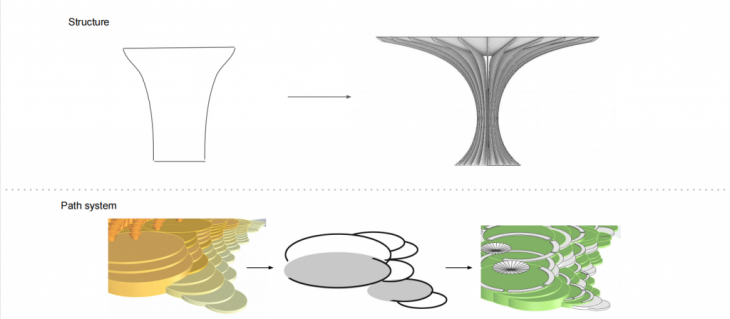
structure and landscape
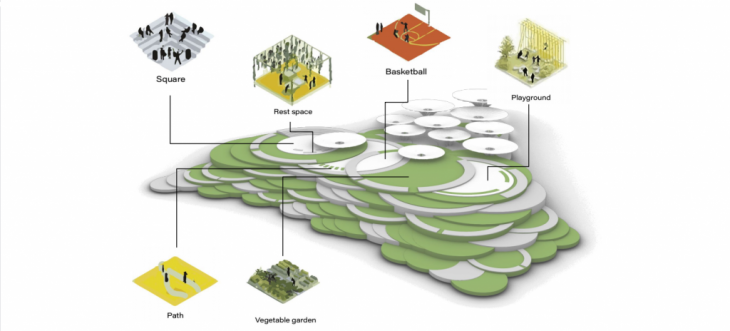
activity space
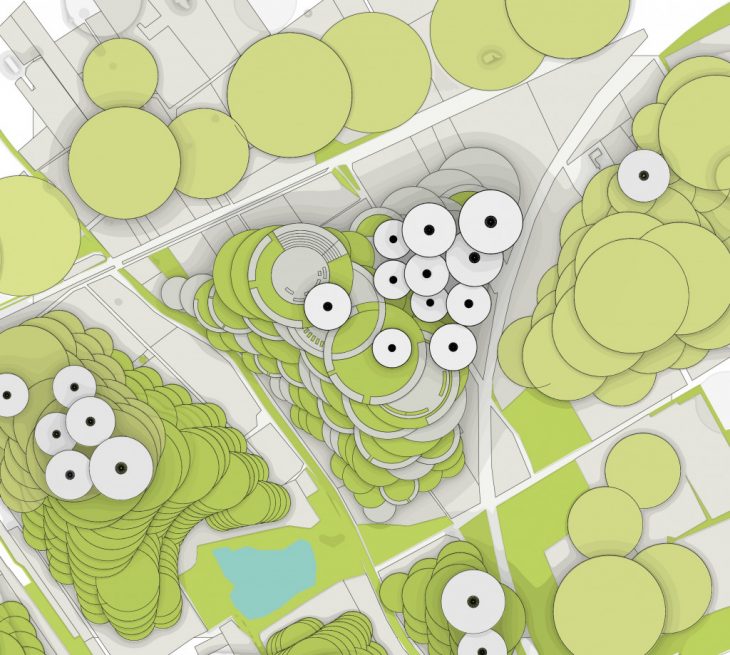
plan

section
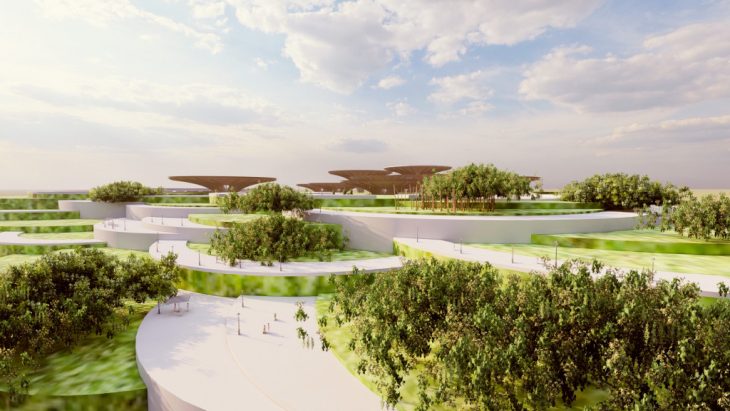
render
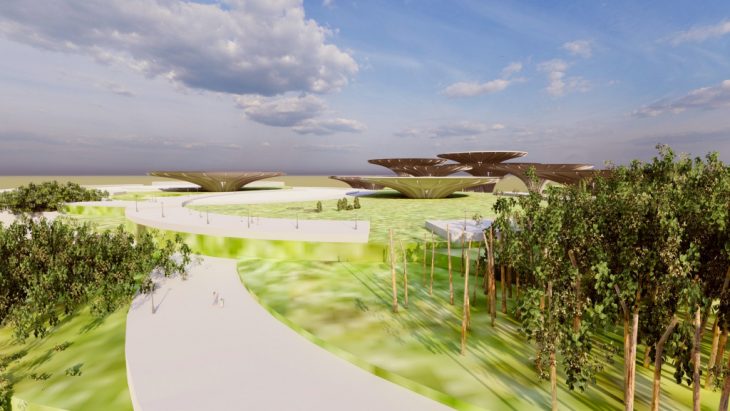
render
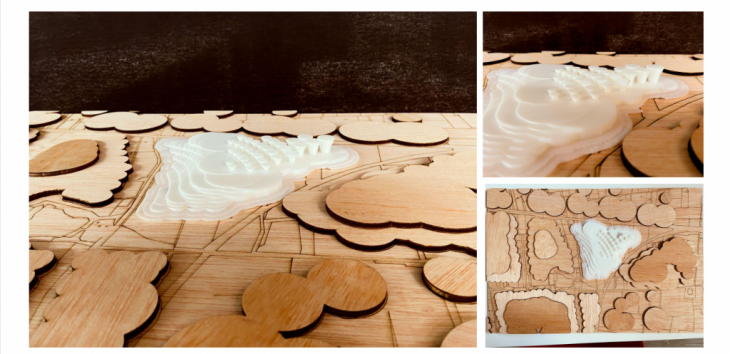
model
Landscape and structure of site 2
Then zoom in to a part of site 2, design the structure. It shows the typology of the structure. Using the fold and cut, we can get the structures of 75%, 50%, and 25%. Then edited them into three groups for storage, transportation, and market.
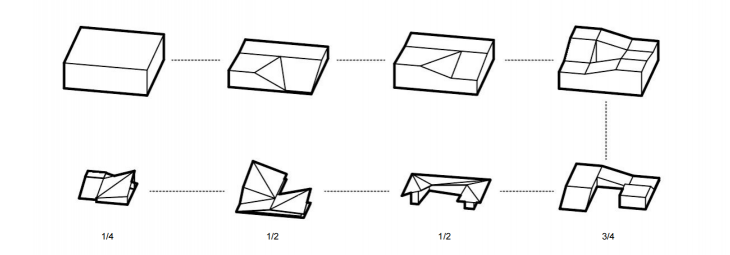
structures
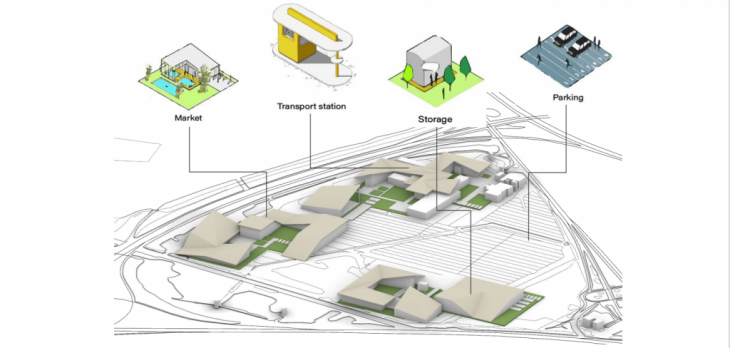
activity space
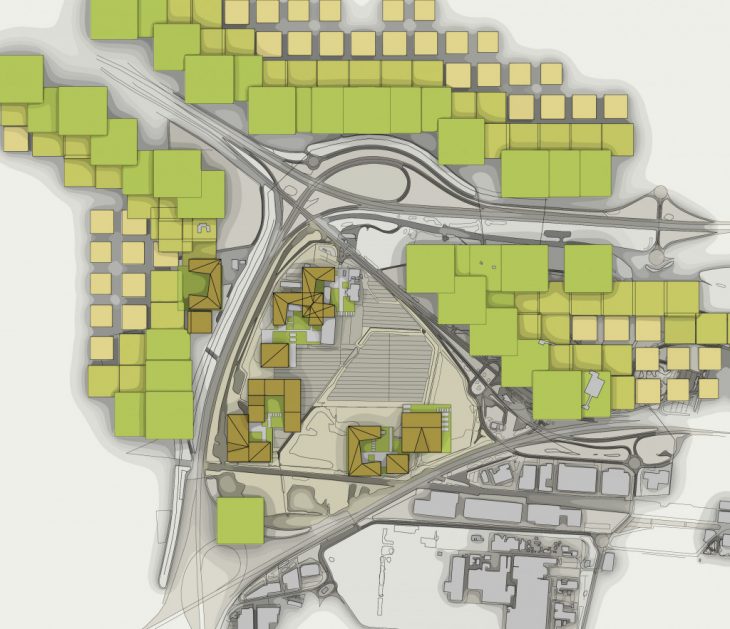
plan

section
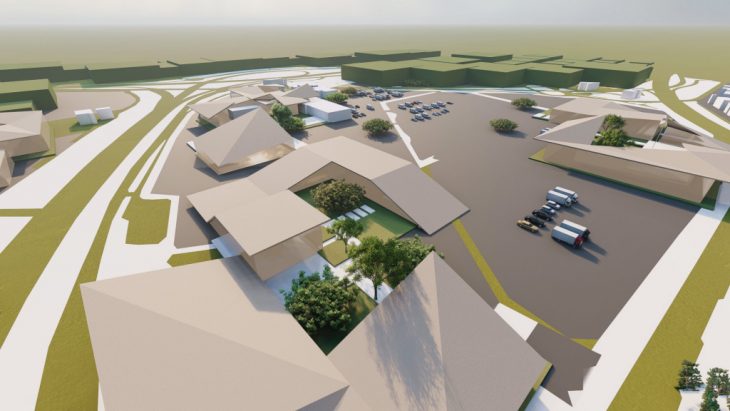
render
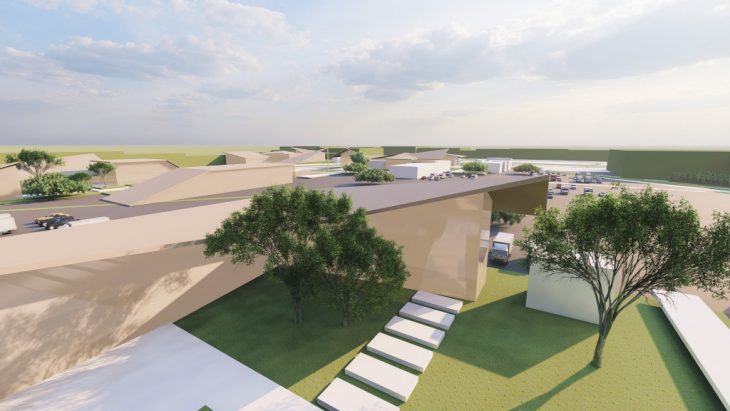
render
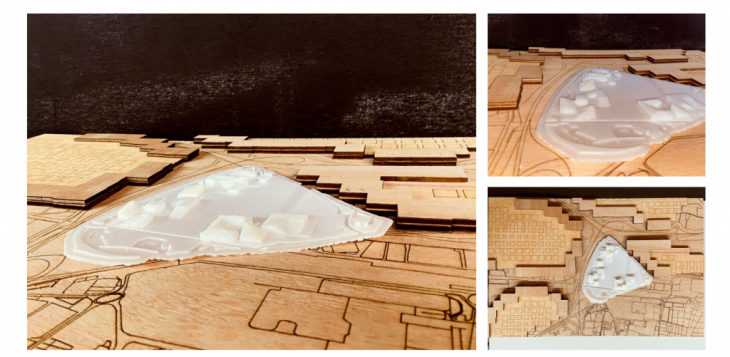
model
Separate and blend is a project of IAAC, Institute for Advanced Architecture of Catalonia developed at the Master in Advanced Architecture in 2020-2021 by students: Jiaqi Sun, and faculty: Willy Muller, Manuel Gausa, Camila Alvarez.